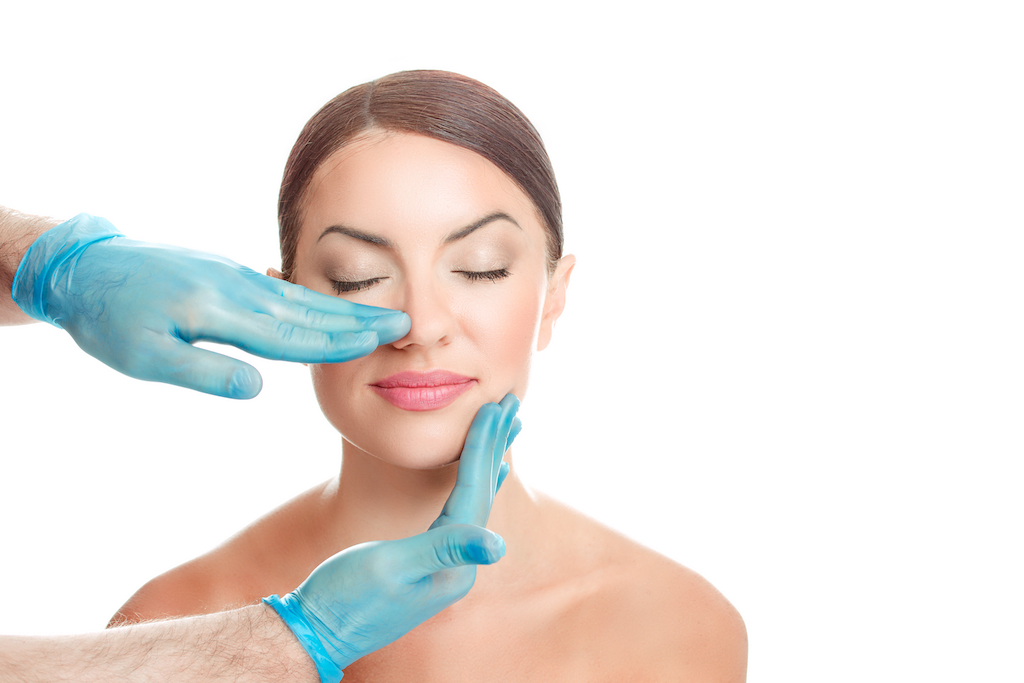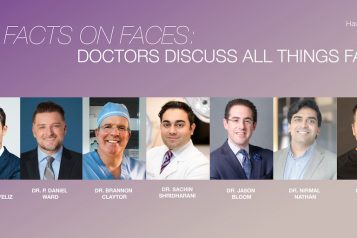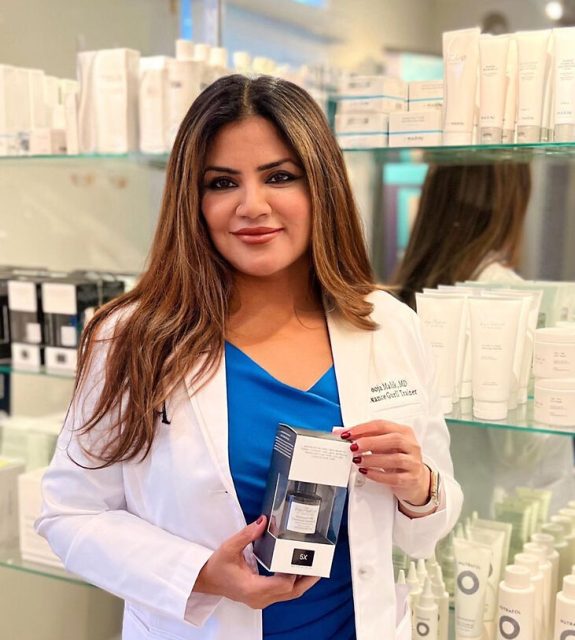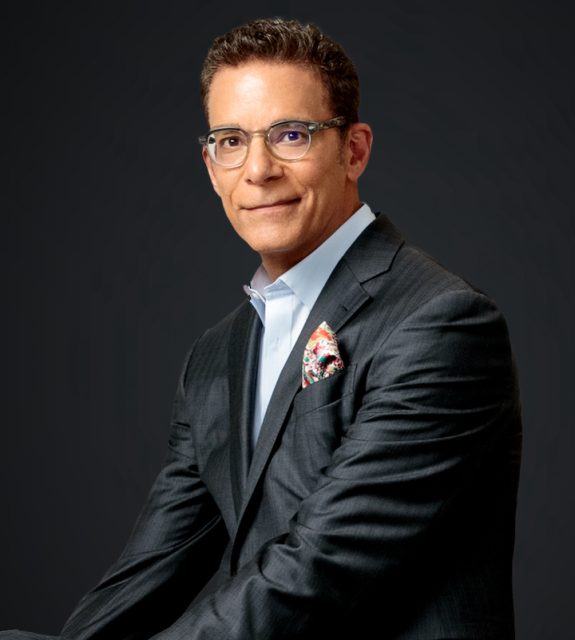An internationally-known double-board certified facial plastic surgeon, Dr. P. Daniel Ward has addressed the aesthetic concerns of thousands of patients helping them restore and improve their self-confidence and self-esteem. Distinguished by attention to detail, a down-to-Earth approach, and a passion for his work, Dr. Ward is recognized as a top facial plastic surgeon around the world. Dr. Ward’s extensive educational credentials include a five-year residency in Otolaryngology-Head & Neck Surgery followed by completion of a Facial Plastic Surgery Fellowship. Haute Beauty sits down with Dr. Ward to discuss the artistry behind a rhinoplasty or revision rhinoplasty to maximize all facial features.
 Photo Credit: ShutterstockHaute Beauty: The nose is the center of the face, and therefore, draws a lot of attention and focus as a feature. When an effective rhinoplasty is performed, what other features, if any, are changed and how?
Photo Credit: ShutterstockHaute Beauty: The nose is the center of the face, and therefore, draws a lot of attention and focus as a feature. When an effective rhinoplasty is performed, what other features, if any, are changed and how?
This is an excellent question. The nose is the most prominent feature of the face. However, it can become an issue when it dominates the face and distracts from the eyes and the smile. In my opinion, the best rhinoplasty results come about when the nose is removed as a prominent, distracting feature and instead blends into the background allowing the eyes and smile to better shine through.
HB: How do you find the space to exercise artistry in your procedures and profession?
The reason that rhinoplasty is my favorite operation is that it allows a combination of science, engineering, and artistry. The science and engineering component comes from a knowledge of anatomy and physiology. The engineering aspect comes about because a lot of what we do in rhinoplasty is adding structure and support. The artistry is important, because how we provide the support and structure to the nose changes based on what we are seeing on the outside of the nose.
In many ways, rhinoplasty is really about light and shadow. The operation is, in large part, about changing how the underlying tissue interacts with light and shadows to create a pleasing appearance. We need to allow the light to reflect off the areas that are supposed to be well lit and to allow shadows to form where there are supposed to be shadows. For example, the tip of the nose is, in general, one of the most prominent areas and so there should be a light reflection off the tip of the nose. If the light reflects off too broad of an area or too narrow of an area, the tip may look excessively broad or excessively narrow, respectively. This is just one example of how artistry is reflected in the practice of facial plastic surgery.
HB: When someone is dissatisfied with their original rhinoplasty results, how long should they wait before getting a revision rhinoplasty? Are revision rhinoplasties possible for everyone or are some patients ineligible?
In general, most reputable surgeons will not do a revision on a nose until at least 12 to 18 months after the initial rhinoplasty. This is because the nasal tissues take a long time to heal. A lot of the issue is related to swelling. Due to its anatomic position and physiology, the nose takes a very long time for the swelling to be completely resolved. In addition, the healing with rhinoplasty depends to a great degree on the formation of scar tissue. A lot of people don't understand that scar formation is a highly active process with collagen and other scar components being actively produced and broken down continuously over the first 12 to 18 months as the scar heals. Healing after rhinoplasty involves the formation of scar tissue to help hold things in place and the process takes quite a while before that scar maturation process is finalized.
Going in to revise something on the nose can interrupt the scar maturation process and can actually lead to other, more severe issues that may be worse. Many times, the asymmetries, prominences, and other concerns that people may have about their nose in the post-op period will resolve with time or shift with time, and waiting for that process to finalize helps ensure that the surgeon knows what will be changed with any revision surgery.
There are some patients who are ineligible due to the fact that further surgery will not likely lead to further improvement or will lead to other issues or even severe complications.
 Photo Credit: ShutterstockHB: Are revision rhinoplasties purely for aesthetic purposes, or like original rhinoplasties, can they also deal with revising new or pre-existing nasal structural issues?
Photo Credit: ShutterstockHB: Are revision rhinoplasties purely for aesthetic purposes, or like original rhinoplasties, can they also deal with revising new or pre-existing nasal structural issues?
Revision rhinoplasty can be for both aesthetic and functional issues. For example, I had a patient a couple of weeks ago who had developed some thick scar tissue around one of the incisions in the nose that was causing some obstruction of nasal airflow. It wasn't really affecting the appearance of the nose, but it was interfering with her ability to breathe easily through the nose. We are planning on taking her back to the operating room to remove a small portion of that scar tissue. It is not a full-on revision procedure, but simply removing some of the scar tissue that developed to fine-tune her result.
HB: Which issues do they usually work to fix?
This is highly variable. Some of the issues may be related to the formation of a bony callus on the dorsum of the nose, some revisions are necessary due to scar tissue of the tip. Some revisions may be due to issues that have occurred, such as infections. Other revisions may be necessary simply because of things not healing in the way that was expected.
HB: What do you think is the most artistic part of performing a rhinoplasty? Would you say it is one of the more artistic procedures? Why?
Without question, rhinoplasty is one of the most artistic procedures. I would argue that it is actually the most artistic procedure. Making sure that the structures of the nose allow the nose to function properly by ensuring good nasal airflow is important, but we also need to ensure that the way that we add that structure to the nose and the way that that structure interacts with the other facial structures, the light, and shadows is appropriate for that patient’s face.
For more information, visit Dr. Ward's Instagram or Facebook!





















